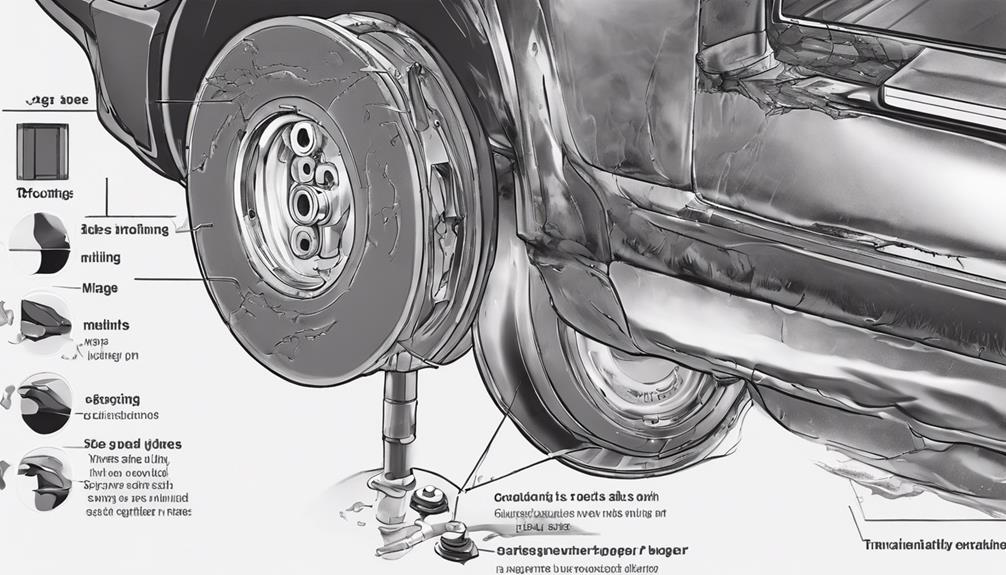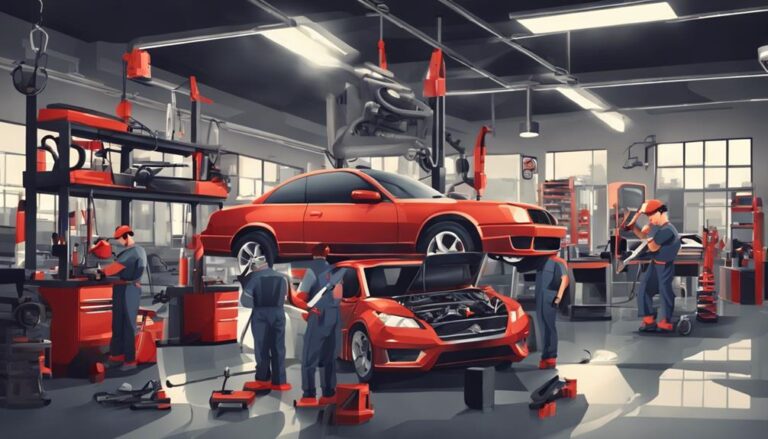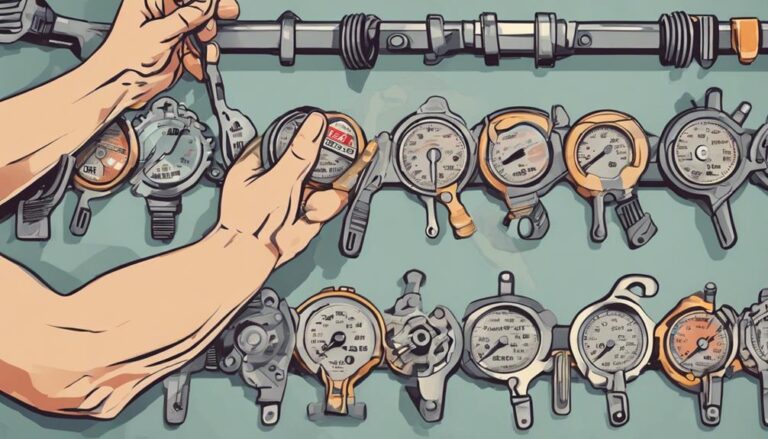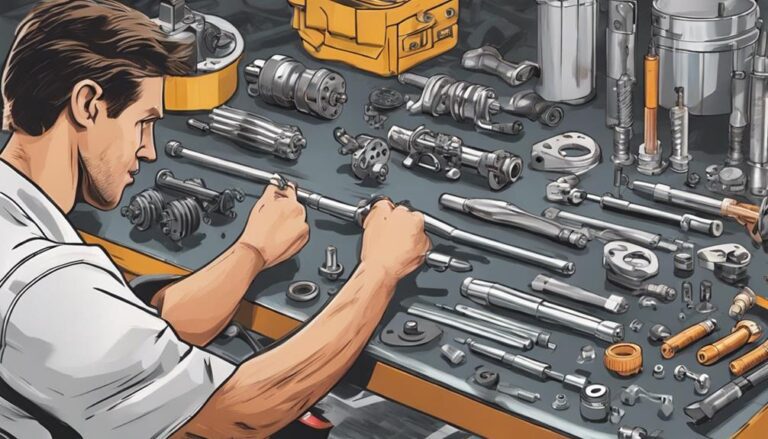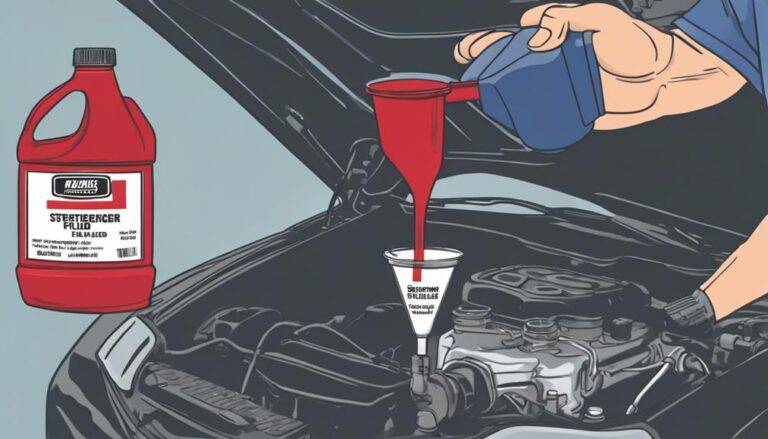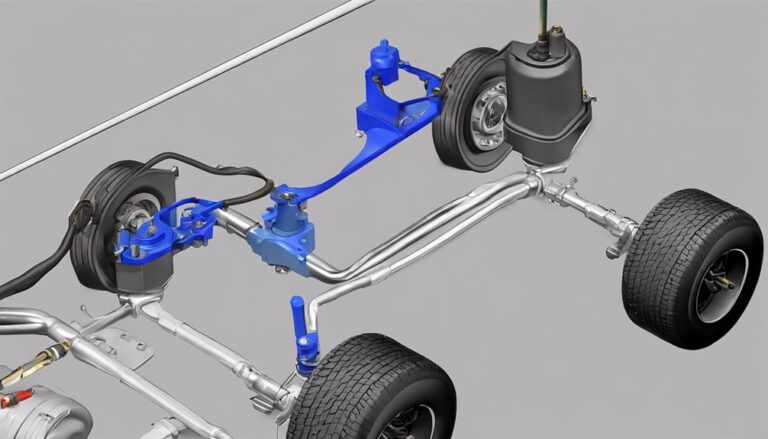Checking for Worn Suspension Bushings: A Simple Guide
Did you know that according to a recent study, over 60% of vehicles on the road have worn suspension bushings?
Feeling a bit uncertain about your own car's bushings? Understanding the signs and consequences of worn suspension bushings is crucial for maintaining your vehicle's performance and safety.
Let's explore a simple guide that can help you identify and address these issues efficiently, ensuring a smoother ride for your future drives.
Key Takeaways
- Regularly inspect suspension system for signs of wear to maintain vehicle performance.
- Use essential tools for thorough bushing inspection to detect abnormalities accurately.
- Address worn bushings promptly to prevent further damage and costly repairs.
- Seek professional evaluation if needed for accurate assessment and timely replacement recommendations.
Signs of Worn Suspension Bushings
If you notice uneven tire wear, impaired handling, increased noise, or a steering wheel that fails to center after turns, these could be signs of worn suspension bushings. To address these issues, consider the following maintenance tips and DIY repairs.
Regularly inspect your suspension system for any signs of wear, such as cracked or deteriorating bushings. Ensure proper lubrication of bushings to reduce friction and wear.
DIY repairs may involve replacing worn bushings with new ones using basic hand tools. When conducting these repairs, remember to observe safety precautions, such as using jack stands and wearing protective gear.
Properly aligning your vehicle after replacing bushings is crucial to prevent further tire wear and ensure optimal handling. By staying proactive with maintenance and addressing worn suspension bushings promptly through DIY repairs, you can maintain your vehicle's performance and safety on the road.
Tools Needed for Inspection
To properly inspect suspension bushings, ensure you have essential tools like a rubber hammer for tapping and a pry bar for assessing play or movement in the bushings. These tools are crucial for a thorough examination of the suspension components.
Here are the tools needed for inspecting suspension bushings:
- Rubber Mallet: Use this tool to gently tap on the bushings and surrounding areas to detect any abnormal sounds or vibrations that could indicate wear or damage.
- Pry Bar: Utilize the pry bar to check for excessive play or movement in the bushings. Apply pressure to see if there's any noticeable give, which could signify worn-out bushings.
- Inspection Techniques: Employ visual inspection along with the rubber mallet and pry bar usage to detect cracks, tears, or other signs of deterioration in the bushings. This comprehensive approach will help in identifying any issues accurately.
Having these diagnostic tools at hand is essential for a successful evaluation of suspension bushings before moving on to the step-by-step inspection process.
Step-by-Step Inspection Process

Begin by inspecting the exterior of the suspension bushings for any visible signs of damage or wear. Look closely for cracks, tears, or any unusual bulging. These visual cues can indicate that the bushings are worn and may need replacement.
Next, proceed to conduct a hands-on inspection by applying pressure to the bushings. Check for excessive movement or play, which could suggest that the bushings are no longer providing adequate support.
To further evaluate the condition of the suspension bushings, consider seeking a professional evaluation. A mechanic can utilize specialized tools and techniques to assess the bushings thoroughly. They may recommend replacement if the bushings are significantly worn or damaged.
Common Issues Caused by Worn Bushings
Experiencing a clunking sound while driving could signal worn bushings that are impacting your vehicle's stability. Here are some common issues caused by worn bushings that you should be aware of:
- Impact on Ride Comfort: Worn suspension bushings can greatly affect your ride comfort. As the bushings deteriorate, they lose their ability to absorb shocks and vibrations properly, leading to a rougher and less pleasant driving experience.
- Uneven Tire Wear and Wheel Alignment: Bad bushings can disrupt the alignment of your wheels, causing uneven tire wear. This not only compromises the lifespan of your tires but also affects the handling and stability of your vehicle on the road.
- Cost of Repairs: Addressing worn suspension bushings promptly is crucial. Neglecting these issues can result in more significant problems down the line, potentially leading to expensive repairs. It's essential to factor in the cost of repairs when considering the implications of worn bushings on your vehicle's overall performance and safety.
Next Steps After Identifying Worn Bushings
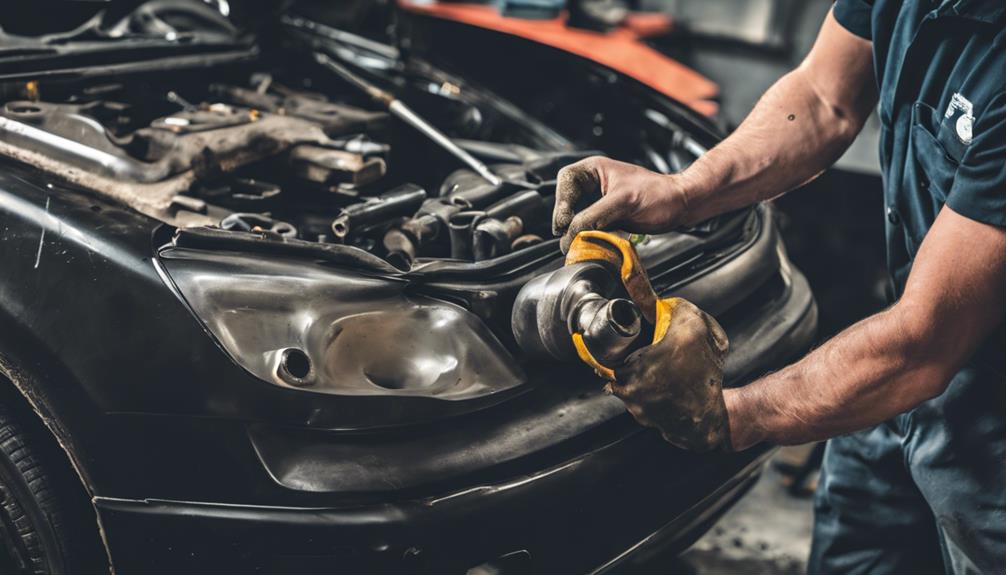
Upon identifying worn bushings in your vehicle's suspension system, immediate replacement is essential to uphold safety and stability.
There are various replacement options available, ranging from original equipment manufacturer (OEM) parts to aftermarket upgrades that offer enhanced performance. When choosing replacement bushings, consider factors such as material durability and resistance to wear.
It's also advisable to follow maintenance tips provided by the manufacturer to ensure longevity and optimal performance of the new bushings.
Additionally, performance upgrades can be considered during the replacement process to enhance the overall handling and responsiveness of your vehicle. Investing in high-quality bushings can significantly improve driving techniques, providing a smoother and more controlled driving experience.
Frequently Asked Questions
How Do You Inspect Suspension Bushings?
To inspect suspension bushings, visually check for cracks, tears, or deformations. Use a rubber hammer to tap and listen for abnormal sounds. Perform a dry park test on an alignment rack, apply pressure with a pry bar, and look for uneven tire wear.
How Do I Know if My Suspension Bushings Are Bad?
When determining if your suspension bushings are bad, listen for clunking, uneven tire wear, steering wheel vibration, pulling to one side, loose steering, or squeaking. Replacement options include polyurethane or OEM rubber bushings.
How Do I Know if My Suspension Bushes Are Worn?
To check if your suspension bushes are worn, visually inspect for cracks or splits, and measure any excessive movement. Listen for handling noises and be aware of handling issues like drifting or vibration. Address these signs promptly.
How Do You Check for Excessive Play in Suspension Bushes?
In your quest for smooth rides, seek signs of wear like a detective. Pry gently for play, listen for clunks. Watch for tire clues. Drive alert for changes. Quick fixes or pro help await.
Conclusion
After identifying worn suspension bushings, take action promptly to ensure optimal vehicle performance.
Do you want to risk compromised handling and safety, or will you prioritize maintenance for a smoother ride?
Remember, addressing worn bushings is crucial for a better driving experience.
Don't wait – inspect, diagnose, and replace those bushings to keep your vehicle in top condition.

